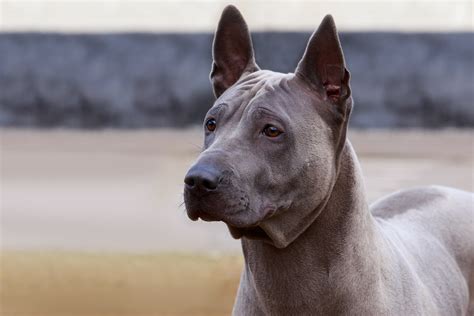Discover the history, characteristics, and care of rare and unique dog breeds. Learn how to find, adopt, and embrace these uncommon pets.
Introduction to Rare Dog Breeds
Introduction to Rare Dog Breeds
Rare dog breeds are often overlooked when it comes to choosing a new pet. However, these unique and lesser-known breeds can make wonderful companions for the right owner. It’s important to understand the characteristics and history of these uncommon dogs in order to provide the best care and training for them.
When considering rare dog breeds, it’s crucial to remember that each breed has its own specific needs and health considerations. Some rare breeds may have a predisposition to certain health issues, so it’s essential to be aware of these potential concerns before deciding to bring one of these pets into your home.
Finding and adopting a rare dog breed can be a rewarding experience, but it’s important to do thorough research and seek out reputable breeders or rescue organizations that specialize in uncommon breeds. By embracing these unique pets, you’ll not only gain a loyal companion but also contribute to the preservation of these rare and special breeds.
Characteristics of Unique Dog Breeds
Characteristics of Unique Dog Breeds
When it comes to choosing a pet, many people tend to go for the more common dog breeds such as Labradors, Golden Retrievers, or German Shepherds. However, there are several rare dog breeds out there that make unique and special pets. These unique dog breeds often have distinct characteristics that set them apart from the more popular breeds. From their physical appearance to their temperament, these rare dog breeds have a lot to offer to the right owner.
One of the key characteristics of unique dog breeds is their physical appearance. Many of these rare dog breeds have features that are quite different from what you would typically see in a dog. For example, the Xoloitzcuintli, also known as the Mexican Hairless Dog, is a breed known for its lack of hair. This breed comes in three sizes: toy, miniature, and standard, and is characterized by its elegant and sleek appearance. Another example is the Azawakh, a breed known for its slim and elegant build, and a short, fine coat. These physical attributes make rare dog breeds stand out and catch the eye of anyone looking for a distinctive pet.
Aside from their physical appearance, the unique dog breeds also have distinct temperaments and personalities. For instance, the Tibetan Mastiff is known for its loyal and protective nature. This breed is often aloof with strangers, making it an excellent guard dog. On the other hand, the Thai Ridgeback is known for being an independent and intelligent breed. These rare dog breeds have personalities that may require different approaches to training and handling, making them an intriguing choice for experienced dog owners looking for a new challenge.
History of Uncommon Dog Breeds
Uncommon dog breeds have a rich and diverse history that often dates back centuries. These unique breeds may have originated in specific regions or were bred for specific purposes, leading to their distinct characteristics. The history of these uncommon dog breeds provides insight into their origins, development, and the roles they played in different cultures and societies.
Many rare dog breeds have fascinating historical backgrounds, often being favored by royalty or nobility and playing important roles in hunting, herding, or guarding. Some uncommon breeds may have even been on the brink of extinction at certain points in history, only to be revived and preserved by dedicated enthusiasts and breeders. Learning about the history of these unique dog breeds helps to deepen our appreciation for their individual traits and the significant contributions they have made to human society.
Understanding the historical context in which these uncommon breeds were developed also sheds light on the specific traits and behaviors they exhibit today. By delving into their past, we gain a better understanding of why these breeds possess certain characteristics and how they have evolved over time. The history of uncommon dog breeds is a fascinating journey through time, revealing the enduring legacy of these remarkable animals.
Training and Care for Rare Dogs
Training and Care for Rare Dogs
In order to provide the best training and care for rare dog breeds, it is important to understand their unique needs and characteristics. Each rare breed has its own set of traits and temperaments that require specific training methods and care routines. It is essential to tailor the training and care to the individual needs of the rare breed in order to ensure their well-being and happiness.
When it comes to training rare dog breeds, patience and consistency are key. It is important to use positive reinforcement techniques, such as treats and praise, to encourage good behavior. Additionally, individualized training plans that take into account the specific traits and tendencies of the rare breed can be highly effective in helping them learn and develop good habits.
As for care for rare dog breeds, it is important to prioritize their health and well-being. Regular exercise, proper nutrition, and regular vet check-ups are essential for maintaining the overall health of rare dog breeds. Additionally, grooming and hygiene routines should be tailored to the specific needs of the breed to ensure their physical and emotional well-being.
Health Considerations for Unusual Breeds
When considering adopting a rare or unusual dog breed, it is important to take into account the specific health considerations that may come with these unique pets. Unlike more common breeds, uncommon dog breeds may have a higher likelihood of certain genetic conditions or predispositions to certain illnesses. It is crucial for potential owners of rare dog breeds to be aware of these health risks in order to provide the best possible care for their pets.
One of the main health considerations for unusual dog breeds is their genetic predisposition to certain diseases. Some rare breeds may have a higher risk of developing hip dysplasia, heart conditions, or neurological disorders. It is important for owners to research the specific health issues associated with their chosen breed and to work closely with a veterinarian to monitor and address these potential concerns.
In addition to genetic predispositions, rare dog breeds may also be more prone to environmental sensitivities or allergies. Certain breeds may have skin conditions or respiratory issues that require special attention and care. Owners of uncommon dog breeds should be prepared to invest time and resources into managing these potential health concerns, and to seek out the expertise of a veterinarian who is familiar with the unique needs of their specific breed.
Finding and Adopting Rare Dog Breeds
Looking for a unique and special furry friend to add to your family? Consider adopting a rare dog breed! Finding and adopting rare dog breeds can be a rewarding experience, as these dogs often have unique characteristics that set them apart from more common breeds. When searching for a rare dog breed to adopt, it’s important to do your research and find a reputable breeder or rescue organization that specializes in these uncommon pets.
Because rare dog breeds are not as widely available as popular breeds, it may take some time and effort to find and adopt the perfect furry companion. However, the reward of giving a special dog a loving home is well worth the time and dedication it takes to find them. Additionally, choosing to adopt a rare dog breed helps to support breed preservation and can contribute to maintaining genetic diversity in the canine population.
When considering adopting a rare dog breed, it’s important to be prepared for the specific needs and requirements that come with caring for a unique pet. Different rare breeds have distinctive health considerations, exercise and grooming needs, and training requirements. Make sure to educate yourself about the specific characteristics of the breed you are interested in, and be ready to provide the care and attention that your rare furry friend deserves.
Conclusion: Embracing Uncommon Pets
Conclusion: Embracing Uncommon Pets
Embracing uncommon pets can be a rewarding experience for any pet owner. Many rare dog breeds offer unique characteristics and traits that can make them wonderful companions. By considering these unusual breeds for adoption, pet owners can open themselves up to new and enriching relationships with their furry friends.
When it comes to embracing uncommon pets, it’s important for pet owners to be prepared for the specific care and training requirements that may come with these rare breeds. Researching the health considerations, grooming needs, and exercise requirements of unusual dog breeds is crucial to ensuring that they receive the best possible care and attention.
In conclusion, while rare dog breeds may not be as well-known as more popular breeds, they have a lot to offer in terms of unique personality traits and qualities. Embracing these uncommon pets can be a fulfilling experience, and pet owners should consider the value of opening their hearts and homes to these special and often overlooked breeds.
Frequently Asked Questions
What are some examples of rare dog breeds?
Some examples of rare dog breeds include the Azawakh, Catalburun, and Mudi.
What makes rare dog breeds unique as pets?
Rare dog breeds are unique as pets because they are often not as commonly seen, making them stand out. They also often have unique physical and personality traits.
Are rare dog breeds more challenging to train?
Rare dog breeds are not necessarily more challenging to train, but they may require specific training methods based on their individual breed characteristics.
Where can someone find rare dog breeds to adopt?
Rare dog breeds can often be found through specialized breed clubs, rescue organizations, and breeders who focus on rare breeds.
Do rare dog breeds have specific health concerns?
Like all dog breeds, rare dog breeds may have specific health concerns that potential owners should be aware of. It’s important to research the health issues associated with a specific rare breed.
Are rare dog breeds more expensive to own?
Rare dog breeds can be more expensive to own due to their rarity and the potential costs associated with obtaining a dog from a reputable breeder or source.
What should someone consider before adopting a rare dog breed?
Before adopting a rare dog breed, someone should consider the breed’s specific needs, exercise requirements, grooming needs, and any potential challenges associated with the rarity of the breed.





